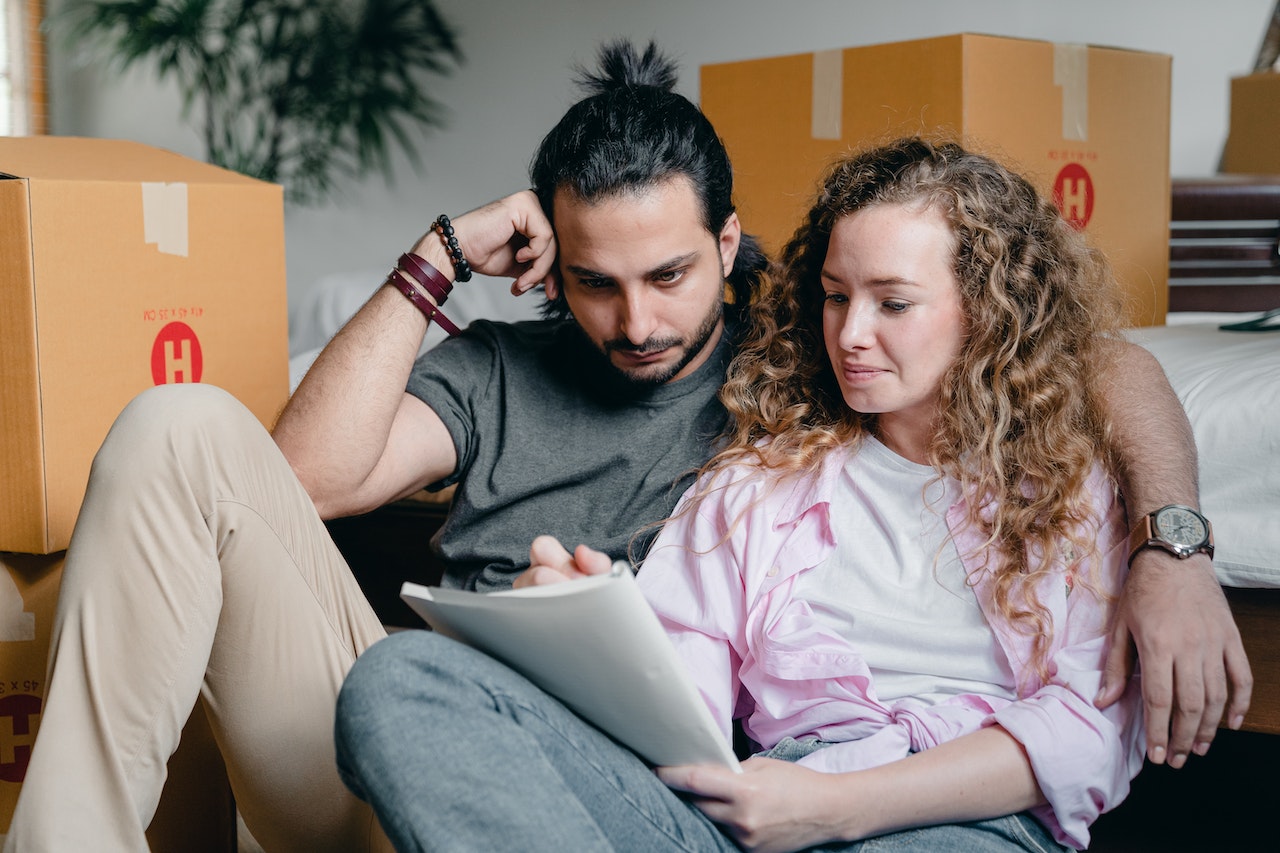
Safely Packing Fragile Items for Your Move
One of the most stressful aspects of relocating might be the packing and moving of the fragile items
One of the most stressful aspects of relocating might be the packing and moving of the fragile items. During a move, boxes are handled frequently, so it’s crucial to take extra precautions with your breakables to ensure their safety.
The first step in packing your delicate belongings with care is to protect them. This will take up some extra time but is a necessary step. You should use extra caution regarding the instruments and methods you employ. If extra attention and care is applied, your belongings will surely arrive in one piece.
However, if you don’t want to be responsible for that stress, simply trust the services of our Movers and Packers in Toronto. These professional movers will take care of your fragile items and make your moving process stress-free.
How to Pack Different Types of Fragile Items
Certain items in your house need extra care to make sure they get to your new location undamaged, whether you’re moving across town, across the state, or even across the city. That is why it is recommended to make use of professional movers.
The kitchen is a famously challenging room to pack for a relocation. It takes little time to learn how to pack fragile objects correctly, but it will ensure that your breakable ceramic mugs and glassware arrive at your new house undamaged. Here are some tips you can follow on how to pack glasses, dishes, and cups to prevent them from being damaged.
How to Pack the Dishes
Dish-specific boxes are available in a lot of moving supply retailers.
- To properly wrap your dish, place it in the middle of a piece of packing paper and pull the corners over the plate.
- Proceed with three additional identical-sized plates similarly.
- Place your four plates in a stack, flip them onto a fresh piece of packing paper, and then rewrap the whole bundle, taping it shut.
- After placing the dishes upright on a thick sheet of packing paper, place the bundle in a tiny box. (Packed flat, dishes are more prone to break.) Bundles should be added until the box is tightly packed.
- Packing paper should be stuffed into the top and all four sides before taping shut. Mark boxes with the words “Fragile, This Side Up.”
- For bowls of comparable sizes, follow the same procedure.
How to pack the Cups, Glasses, and Stemware
Packing paper should first be gently stuffed into cups and glasses. Next, wrap paper over the stems and handles, gently crumpling it to provide cushioning, and wrap each piece of paper separately.
- Pack glasses, cups, and stemware upright in a box packed with packing paper, and cushion them carefully with crumpled paper instead of lying them down.
- If the glassware in your box is all the same size, you can stack it carefully, being sure to stuff crumpled packing paper into every empty spot.
- Mark boxes with the words “Fragile, This Side Up.”
- Consider double-boxing stemware that is very delicate.
- Once the box is packed, put it inside a bigger box with packing paper around the edges. (This method works well for mailing fragile things as well.)
How to pack the Knives
- Wrap each knife in paper, and then in bubble wrap. (Or put them in sleeve protectors made especially for blades.)
- When you unpack, keep an eye out for any sharp edges by labeling the bundles.
How to pack the framed pictures and paintings
When packing framed pictures and paintings, sort them from largest to smallest; you can group small and medium sized paintings in one box and framed pictures together. However, the large ones need their own separate box.
- Head to the truck rental agency or a moving supply retail shop and ask for specialty boxes that are slightly larger than the frames you are moving.
- From the same store, you can also find masking tape, bubble wrap, brown packing paper and moving tape.
- Tape ax “X” on frames with glasses. This will prevent it from moving around too much and breaking.
- If the painting has no glass over it, protect it with several rounds of kitchen wrap (for example, seran wrap).
- Now lay the paintings or pictures flat and wrap it with brown paper like you would with a gift on Christmas! (Caution: never wrap frames with newspaper as they can leave stain on your paintings.)
- You will use the packing tape all around the frames vertically and horizontally.
- When you go to wrap with bubble wrap on top of the last layer, make sure the bubbles are facing outwards and not inwards. (The bubbles are there to protect against sudden collisions and movements).
- Remember to identify each box and note “this side up”. Seal the boxes very well and get a friend to help when you are placing each wrapped artwork into them.
- Identify that the boxes are “Fragile” and note the location they need to be transported to at arrival location.
How to Pack Televisions & Electronics
When packing a television, try to use the original box and packing supplies. If you don’t have that, protect your television with packing materials and a television box. Wrap a TV with two people.
- Take off the accessories and cords, then place them in a different box.
- Ensure not to tape the TV directly when using a bubble pack to protect it.
- To make packing the TV easier, use two boxes as a support. To secure the TV in the carton, use the foam inserts included with the package.
- Use packing tape to secure the carton after closing it.
- Put “Glass” and “This end up” on the box’s front.
The size of the box is crucial for safely packing a TV. You’re already well on your way if you still have the original packaging. If you still need to, you’ll need to get a box that fits your flat screen’s measurements by measuring it. The majority of hardware stores offer sturdy boxes made especially for flat-screen TVs. The perfect box is slightly larger than your TV but still has space for packing materials.
If you package it yourself, keep your electronics in its original box with all the packing materials. If you have thrown away the original packaging, pick a robust box that will allow you to wrap packing material around the electronic.
How to Pack Expensive Clothes
There are various ways to pack your clothes for a move. If your clothes are already hanging in your closet, you should purchase wardrobe boxes that will let you transfer the clothes directly from the closet to the box and store them there hanging on a rod. This keeps the wrinkles out and makes unpacking at your new place much more straightforward. You should confirm with your moving company, but folded clothing that you typically store in your furniture could remain in your drawers. Use small and medium-sized boxes if you need to empty your drawers because clothes boxes can rapidly become heavy.
When at all feasible, put expensive or fragile apparel items in separate boxes for safe transportation. Before placing each pair of shoes into a shoebox, which is then placed inside a bigger moving box, the shoes should be cleaned. Since jewelry is prone to loss, it should always be packed with clothes.
Packing Materials and aids
As you can see, you are going to need a lot of packing materials. Multiple boxes of all kinds and sizes, packing paper, newspaper, bubble wrap, masking tape, packing tape, brown packing paper, labels, markers, etc. Truck rental stores and moving supply retailers sell most of these items. If you are an online-shopper, take a look on Amazon and you’ll be sure to find most. If you don’t have these supplies, use hand towels; if you want a professional to do it, contact experienced packers for moving. They will provide all the supplies necessary.
Short Story on the Move
We once assisted James and Lily, a young couple, in moving into their first house in Toronto. It was their first time moving, so they were a bit anxious about their fragile belongings. What did we do? We assisted them in organizing, packing, and moving their fragile items safely and hassle-free to their new house.
Moreover, Lily had many expensive clothes, so she asked us to be attentive and pack the clothes with care. We took special boxes for clothes and hung them right in the boxes with hangers. Lily was very grateful as all her belongings arrived in the new house safely and with utmost care.
If you want to treat your fragile produce more effectively, Takeoff Moving is here to help. Why us? Because we think like you: those items are not just some things with some monetary value, that can be insured and repaid in case something goes wrong. No, those “things” are in fact irreplaceable memories, special items for your heart, precious members of your home – and we only want to keep them like that.
































